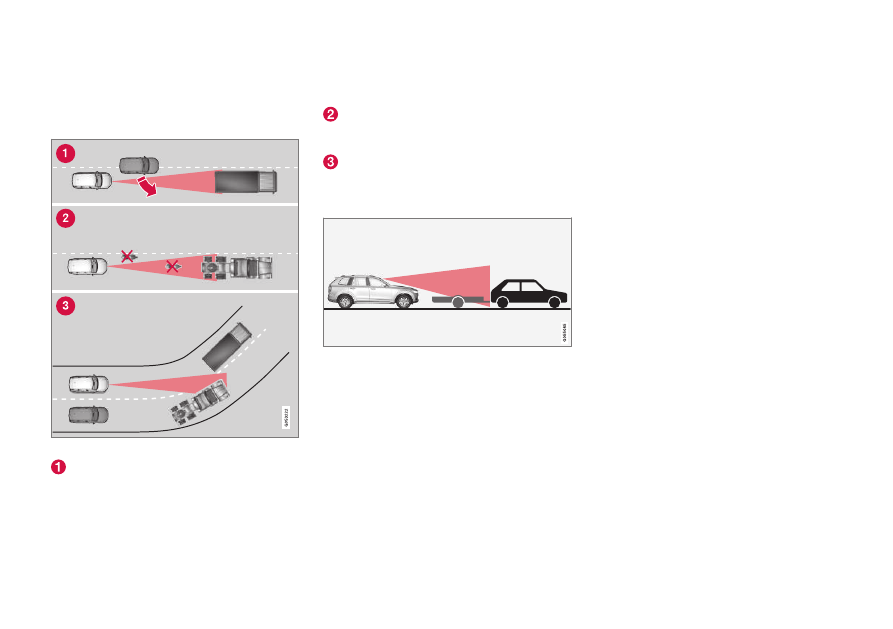Volvo XC60 (2021 year). Manual in english - page 23

||
DRIVER SUPPORT
* Option/accessory.
390
Limited field of vision
The radar sensor has a limited field of vision. In
some situations, it may detect a vehicle later
than expected or not at all.
The radar sensor's field of vision
The radar sensor's detection of vehicles
very close to your vehicle may be delayed
in certain situations, e.g. if a vehicle pulls
in between your vehicle and the vehicle
directly ahead.
Small vehicles, such as motorcycles, or
vehicles that are not driving in the center
of the lane may remain undetected.
In curves, the radar may detect the a dif-
ferent vehicle than intended or lose sight
of a target vehicle.
Low trailers
Low trailer in the radar shadow
Low trailers may also be difficult or even
impossible for the radar to detect. The driver
should be extra alert when driving behind vehi-
cles towing low trailers when Adaptive Cruise
Control
*
or Pilot Assist
*
is activated.
Additional camera limitations
Reduced visibility
Cameras have the same limitations as the
human eye. In other words, their “vision" is
impaired by adverse weather conditions such
as heavy snowfall/rain, dense fog, swirling
dust/snow, etc. These conditions may reduce
the function of systems that depend on the
camera or cause these systems to temporarily
stop functioning.
Strong sunlight, reflections from the road sur-
face, ice or snow covering the road, a dirty
road surface, or unclear lane marker lines may
drastically reduce the camera’s ability to
detect the side of a lane, a pedestrian, a
cyclist, a large animal or another vehicle.